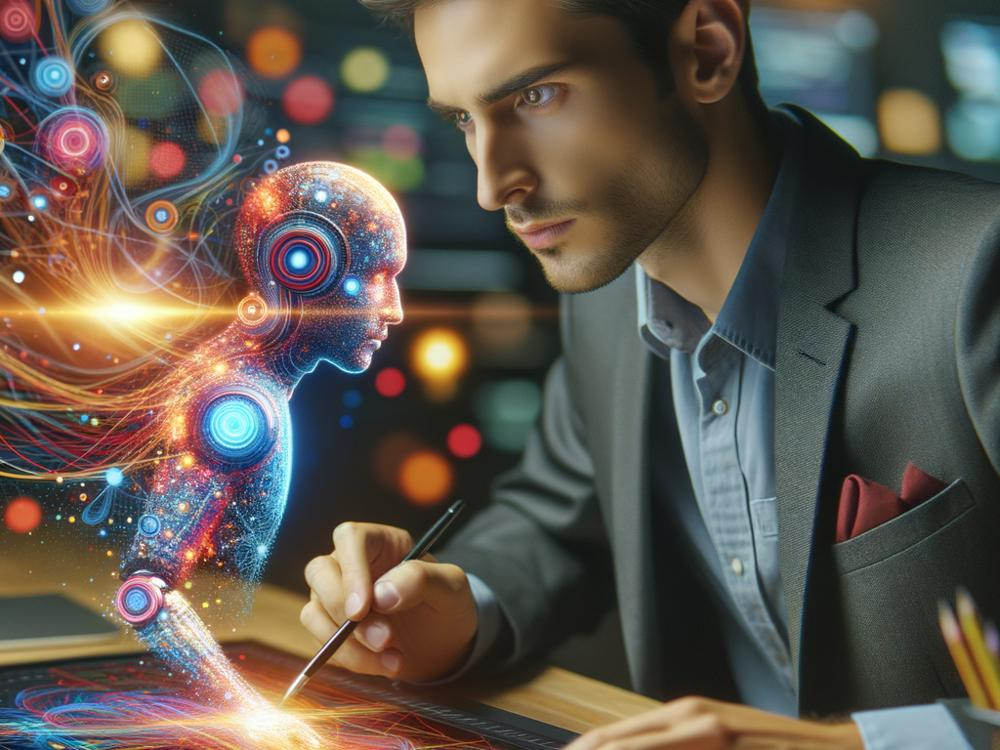Unlocking Creativity: How AI and Automation Revolutionize Graphic Design
In recent years, we've witnessed a dramatic transformation in the world of graphic design. This change is powered by a rather unexpected ally – Artificial Intelligence (AI). Gone are the days when graphic design solely depended on human creativity and traditional tools. Today, AI and automation are playing pivotal roles in reshaping this field, enhancing creative processes, and opening up limitless possibilities. Let's dive into how automation and AI are not only changing the graphic design landscape but also amplifying creativity.
The AI Revolution in Graphic Design
At its core, graphic design is an art form that involves creating visual content to communicate messages. Designers use various elements such as images, typography, and colors to create compelling compositions. Traditionally, this required a high level of skill, an eye for aesthetics, and countless hours of work. Now, AI and automation tools are starting to take over tasks that were once manual, making the design process faster, more efficient, and surprisingly, more creative.
Speed and Efficiency
One of the most immediate impacts of AI in graphic design is the significant increase in speed and efficiency. Tasks that used to take hours can now be completed in minutes. For example, AI-powered tools can automatically generate layouts, choose color schemes, and even suggest design improvements. This rapid turnaround allows designers to focus more on the creative aspects of their projects without getting bogged down by time-consuming tasks.
Unleashing Creativity
You might think that involving machines in a highly creative process would hinder human creativity, but the opposite is true. AI and automation are actually enhancing creativity in graphic design in several ways:
-
Endless Inspiration: AI can analyze vast amounts of data, including existing designs, trends, and visual elements, to suggest unique ideas that a designer might not have thought of on their own. This can serve as a springboard for human creativity, leading to truly innovative designs.
-
Experimentation Made Easy: With AI, designers can quickly experiment with different styles, layouts, and color combinations. This ability to explore numerous options without a significant time investment encourages more experimentation and, ultimately, more creative outcomes.
-
Personalization at Scale: AI's data analysis capabilities make it easier to personalize designs for specific audiences or even individuals. This means that designers can create more relevant and impactful visuals, thus enhancing the overall effectiveness of their work.
Collaboration Between Human and Machine
The relationship between graphic designers and AI is not a competition but a collaboration. While AI can handle certain tasks and provide creative suggestions, the final design decisions rest with the human designer. This symbiosis allows for the creation of designs that are both technically perfect and deeply human in their appeal.
Accessibility and Learning
AI and automation are also making graphic design more accessible to non-designers, allowing them to create professional-quality designs without extensive training. This democratization of design is empowering businesses, educators, and individuals to communicate more effectively through visual content.
Furthermore, AI-powered platforms often come with learning resources, making it easier for budding designers to improve their skills and for seasoned professionals to stay up-to-date with the latest trends and technologies.
Ethical Considerations and the Future
As with any technological advancement, the integration of AI in graphic design comes with its set of ethical considerations. Issues such as job displacement, copyright infringement, and the loss of human touch in designs are valid concerns that the industry must address. However, with proper guidelines and a focus on human-AI collaboration, we can navigate these challenges effectively.
The future of graphic design looks bright with AI and automation playing increasingly significant roles. These technologies are not here to replace human designers but to enhance their creativity, efficiency, and ability to communicate visually. As we continue to explore this partnership, we can expect even more innovative and personalized designs that resonate with audiences on a deeper level.
In conclusion, AI and automation are redefining the landscape of graphic design, making it more efficient, accessible, and most importantly, more creative. By embracing these technologies, designers can unlock their full creative potential, pushing the boundaries of what's possible in the world of visual communication. The future of graphic design is a harmonious blend of human creativity and machine intelligence, leading to a more vibrant and visually engaging world.

